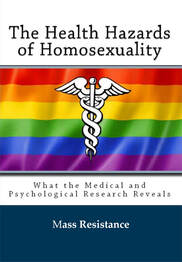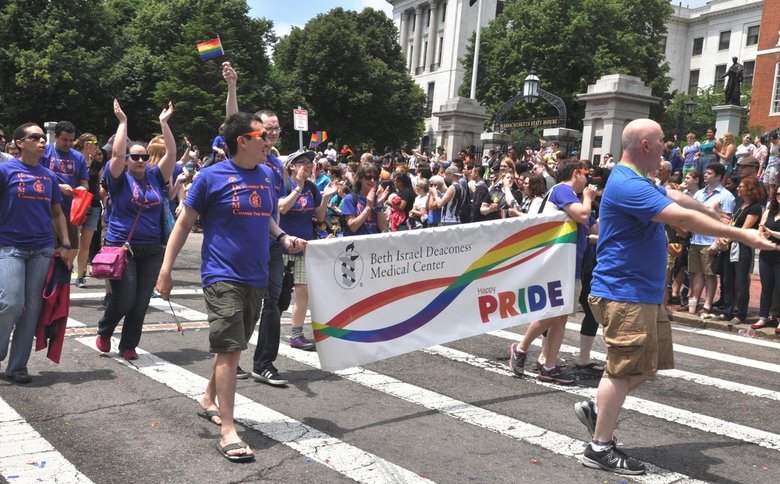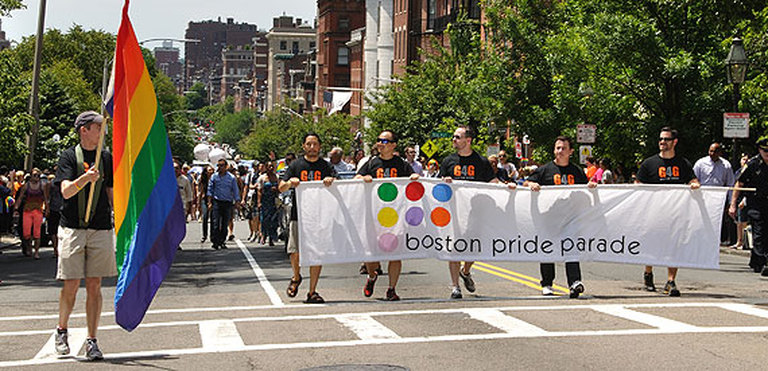
Agreement on GLB Health Disparities
(excerpts from Ch. 2)
Many clinics and organizations have sprung up to treat and support GLB patients. Clearly, their lifestyles, sexual practices, and “sexual identities” bring along a host of particular physical and mental health problems. Even within the “medical establishment” there is agreement that GLB population shows greater incidence of disease and mental health disorders.
The Centers for Disease Control and Prevention (CDC) devotes numerous web pages to the particular health concerns of “gay” and bisexual men, and (to a lesser extent) lesbians and bisexual women.
In 2016, the American Medical Association’s JAMA Internal Medicine published a study using statistics on GLB adults from the 2013 and 2014 National Health Interview Survey (the first to include “sexual orientation” of the respondents).
In one of the largest, most representative health surveys conducted to date, lesbian, gay and bisexual adults reported substantially higher rates of severe psychological distress, heavy drinking and smoking, and impaired physical health than did heterosexuals. Responses from the 2013 and 2014 surveys revealed the following results. Compared to heterosexuals:
• Gay men were more likely to report severe psychological distress, heavy drinking and moderate smoking;
• Bisexual men were more likely to report severe psychological distress, heavy drinking and heavy smoking;
• Lesbian women were more likely to report moderate psychological distress, poor or fair health, multiple chronic conditions, heavy drinking and heavy smoking; and
• Bisexual women were more likely to report multiple chronic conditions, severe psychological distress, heavy drinking and moderate smoking.
The study’s authors push the idea that the discrepancies are “potentially” due to discrimination.
The American Medical Association website has a section on LGBT health issues which links medical professionals to LGBT political advocacy groups such as the Human Rights Campaign and PFLAG (Parents, Families and Friends of LGBTQ), both classified as a major LGBT “health organizations” (which they clearly are not).
The U.S. Institute for Medicine reviewed research confirming greater incidence of health problems in LGBT population, especially HIV/AIDS (among men), mental health, substance use and abuse (alcohol, tobacco, drugs), obesity and breast cancer (among lesbians and bisexual women), and other concerns. ...
The American Psychiatric Association has confirmed a higher incidence of mental health disorders among GLB individuals.
There is little public notice of another prevalent GLB health issue: partner abuse. Multiple sources confirm that homosexual and lesbian relationships have a greater incidence of domestic partner violence than opposite-sex relationships, whether in cohabitation or marriage. ...
Even more disparities come with aging. “Illness is more prevalent among older gay adults,” the New York Times reported in 2011. ...
A review of research from 2009, published by the National Association for Research and Therapy of Homosexuality (NARTH) Scientific Advisory Committee, concluded that there is no reliable evidence that discrimination causes GLB medical and psychological health disparities. ...
Lifespan and Mortality Statistics Do Not Include “Sexual Orientation” of Deceased
Homosexual activists and allies in health agencies (including the CDC) perhaps want to cover up the problem of homosexuals’ serious physical and mental health problems which often lead to shortened life span. Politifact reported in 2012:
We sought U.S. data on how life expectancy of homosexuals compared to the rest of the population. But the CDC, which compiles statistics on longevity, doesn’t keep figures based on sexual orientation… Laura Durso – a public policy fellow at the Williams Institute at UCLA which researches issues facing lesbian, gay, bisexual and transgendered (LGBT) people – said few national population-based surveys in the U.S. inquire ask about sexual orientation. That makes it difficult to compare the life expectancies of homosexuals to heterosexuals, she said. Still, Durso said, reports have shown that LGBT populations face increased certain health risks.
To repeat: Death records do not note the “sexual orientation” of the deceased, making it essentially impossible to track accurately mortality trends for the GLB population....
GLB self-identification often socially isolates individuals from the mainstream culture while drawing them into a relatively closed community (at least regarding their sexual partners), resulting in negative effects on mental and physical health. Homosexual sexual practices can hasten death through resulting physical and mental disease (not limited to HIV/AIDS). Sex addiction often drives MSM (“gay” and bisexual men) especially to ignore warnings, and continue destructive, high-risk behaviors resulting in serious disease and depression, including higher risk of suicide. ...
The Centers for Disease Control and Prevention (CDC) devotes numerous web pages to the particular health concerns of “gay” and bisexual men, and (to a lesser extent) lesbians and bisexual women.
In 2016, the American Medical Association’s JAMA Internal Medicine published a study using statistics on GLB adults from the 2013 and 2014 National Health Interview Survey (the first to include “sexual orientation” of the respondents).
In one of the largest, most representative health surveys conducted to date, lesbian, gay and bisexual adults reported substantially higher rates of severe psychological distress, heavy drinking and smoking, and impaired physical health than did heterosexuals. Responses from the 2013 and 2014 surveys revealed the following results. Compared to heterosexuals:
• Gay men were more likely to report severe psychological distress, heavy drinking and moderate smoking;
• Bisexual men were more likely to report severe psychological distress, heavy drinking and heavy smoking;
• Lesbian women were more likely to report moderate psychological distress, poor or fair health, multiple chronic conditions, heavy drinking and heavy smoking; and
• Bisexual women were more likely to report multiple chronic conditions, severe psychological distress, heavy drinking and moderate smoking.
The study’s authors push the idea that the discrepancies are “potentially” due to discrimination.
The American Medical Association website has a section on LGBT health issues which links medical professionals to LGBT political advocacy groups such as the Human Rights Campaign and PFLAG (Parents, Families and Friends of LGBTQ), both classified as a major LGBT “health organizations” (which they clearly are not).
The U.S. Institute for Medicine reviewed research confirming greater incidence of health problems in LGBT population, especially HIV/AIDS (among men), mental health, substance use and abuse (alcohol, tobacco, drugs), obesity and breast cancer (among lesbians and bisexual women), and other concerns. ...
The American Psychiatric Association has confirmed a higher incidence of mental health disorders among GLB individuals.
There is little public notice of another prevalent GLB health issue: partner abuse. Multiple sources confirm that homosexual and lesbian relationships have a greater incidence of domestic partner violence than opposite-sex relationships, whether in cohabitation or marriage. ...
Even more disparities come with aging. “Illness is more prevalent among older gay adults,” the New York Times reported in 2011. ...
A review of research from 2009, published by the National Association for Research and Therapy of Homosexuality (NARTH) Scientific Advisory Committee, concluded that there is no reliable evidence that discrimination causes GLB medical and psychological health disparities. ...
Lifespan and Mortality Statistics Do Not Include “Sexual Orientation” of Deceased
Homosexual activists and allies in health agencies (including the CDC) perhaps want to cover up the problem of homosexuals’ serious physical and mental health problems which often lead to shortened life span. Politifact reported in 2012:
We sought U.S. data on how life expectancy of homosexuals compared to the rest of the population. But the CDC, which compiles statistics on longevity, doesn’t keep figures based on sexual orientation… Laura Durso – a public policy fellow at the Williams Institute at UCLA which researches issues facing lesbian, gay, bisexual and transgendered (LGBT) people – said few national population-based surveys in the U.S. inquire ask about sexual orientation. That makes it difficult to compare the life expectancies of homosexuals to heterosexuals, she said. Still, Durso said, reports have shown that LGBT populations face increased certain health risks.
To repeat: Death records do not note the “sexual orientation” of the deceased, making it essentially impossible to track accurately mortality trends for the GLB population....
GLB self-identification often socially isolates individuals from the mainstream culture while drawing them into a relatively closed community (at least regarding their sexual partners), resulting in negative effects on mental and physical health. Homosexual sexual practices can hasten death through resulting physical and mental disease (not limited to HIV/AIDS). Sex addiction often drives MSM (“gay” and bisexual men) especially to ignore warnings, and continue destructive, high-risk behaviors resulting in serious disease and depression, including higher risk of suicide. ...
Prominent hospitals go out of their way to be "welcoming" to LGBT patients and their special needs.
Here, Beth Israel Deaconess Medical Center staff march in the Boston Pride parade.
(MassResistance photo)
Here, Beth Israel Deaconess Medical Center staff march in the Boston Pride parade.
(MassResistance photo)
Why we don't hear more about GLB Health Hazards
Psychologist A. Dean Byrd stated:
On the issue of risks of homosexual practices, the national [health] organizations have become reckless guardians of the public health. The failure to report morbidity and mortality rates associated with homosexual practices should be cause for governmental scrutiny. The furthering of an agenda – no matter whose agenda – must not be placed above the lives of those whose interests must be protected. Activism must not be placed above science in informing public policy. It is an injustice to homosexual men and women to allow activism, including accusations of homophobia, to silence discussion of health risks or to suppress research. A civil society has an obligation to implement policies that promote the health and well-being of its citizens.
In the early 1970s, sexual-radical activists subverted the American Psychiatric Association and the American Psychological Association, and forced the removal of homosexuality from the list of mental disorders. A former head of the American Psychological Association, Dr. Nicholas Cummings, recently admitted that his group is essentially controlled by “ultra leftists” and the “gay rights movement,” and that scientific evidence is no longer the basis for its policy positions.
Following the lead of the mental health groups, others fell into line: the Centers for Disease Control and Prevention (CDC), the federal Department of Health & Human Services, major medical associations, local public health agencies, the American Association for the Advancement of Science, and assorted media. The unscientific opinion that homosexuality should no longer be considered a mental disorder became the accepted wisdom. Sodomitic practices were now to be considered normal and healthy expressions of human sexuality.
The CDC sets the tone for the medical establishment’s view of homosexuality. It disseminates the dogma that male homosexuals can “establish and maintain sexual health.” But how likely is this? Most homosexual men will choose to continue the lifestyle and physical practices that define their “sexual orientation”: promiscuity, anonymous sex partners, anal penetration, contact with or ingestion of feces, failure to adhere to “safer sex” advice, etc. Whether condoms, lubrication, and dental dams are used or not, exposure to infection and trauma to organs will still occur, and psychological outcomes will not be healthy. ...
The American Medical Association (AMA) and the American Academy of Pediatrics are now GLB-affirming. The AMA requires “the physician’s nonjudgmental recognition of sexual orientation and behavior,” also referencing “culturally competent care.” Internal health physicians now find it more difficult to tell a homosexual his behaviors endanger his physical well-being. If those sexual desires and practices are normal, why should they be questioned, and how could they be dangerous? A doctor’s critical attitude (based on medical risks) may now be considered unacceptable “discrimination” and “stigmatization.”
The AMA’s ethics document also reveals its leftist politics, advocating: overturning the “Don’t Ask Don’t Tell” military policy; lifting the lifetime ban on homosexual males donating blood; adoption by same-sex couples; “gay” youth membership in organizations (e.g., Boy Scouts); and same-sex “marriage.” Medicine has been politicized ...
Psychologist A. Dean Byrd stated:
On the issue of risks of homosexual practices, the national [health] organizations have become reckless guardians of the public health. The failure to report morbidity and mortality rates associated with homosexual practices should be cause for governmental scrutiny. The furthering of an agenda – no matter whose agenda – must not be placed above the lives of those whose interests must be protected. Activism must not be placed above science in informing public policy. It is an injustice to homosexual men and women to allow activism, including accusations of homophobia, to silence discussion of health risks or to suppress research. A civil society has an obligation to implement policies that promote the health and well-being of its citizens.
In the early 1970s, sexual-radical activists subverted the American Psychiatric Association and the American Psychological Association, and forced the removal of homosexuality from the list of mental disorders. A former head of the American Psychological Association, Dr. Nicholas Cummings, recently admitted that his group is essentially controlled by “ultra leftists” and the “gay rights movement,” and that scientific evidence is no longer the basis for its policy positions.
Following the lead of the mental health groups, others fell into line: the Centers for Disease Control and Prevention (CDC), the federal Department of Health & Human Services, major medical associations, local public health agencies, the American Association for the Advancement of Science, and assorted media. The unscientific opinion that homosexuality should no longer be considered a mental disorder became the accepted wisdom. Sodomitic practices were now to be considered normal and healthy expressions of human sexuality.
The CDC sets the tone for the medical establishment’s view of homosexuality. It disseminates the dogma that male homosexuals can “establish and maintain sexual health.” But how likely is this? Most homosexual men will choose to continue the lifestyle and physical practices that define their “sexual orientation”: promiscuity, anonymous sex partners, anal penetration, contact with or ingestion of feces, failure to adhere to “safer sex” advice, etc. Whether condoms, lubrication, and dental dams are used or not, exposure to infection and trauma to organs will still occur, and psychological outcomes will not be healthy. ...
The American Medical Association (AMA) and the American Academy of Pediatrics are now GLB-affirming. The AMA requires “the physician’s nonjudgmental recognition of sexual orientation and behavior,” also referencing “culturally competent care.” Internal health physicians now find it more difficult to tell a homosexual his behaviors endanger his physical well-being. If those sexual desires and practices are normal, why should they be questioned, and how could they be dangerous? A doctor’s critical attitude (based on medical risks) may now be considered unacceptable “discrimination” and “stigmatization.”
The AMA’s ethics document also reveals its leftist politics, advocating: overturning the “Don’t Ask Don’t Tell” military policy; lifting the lifetime ban on homosexual males donating blood; adoption by same-sex couples; “gay” youth membership in organizations (e.g., Boy Scouts); and same-sex “marriage.” Medicine has been politicized ...
Boston Pride parade takes over historic Beacon Street in Boston. (MassResistance photo)
For more on this subject and citations, purchase the book!

